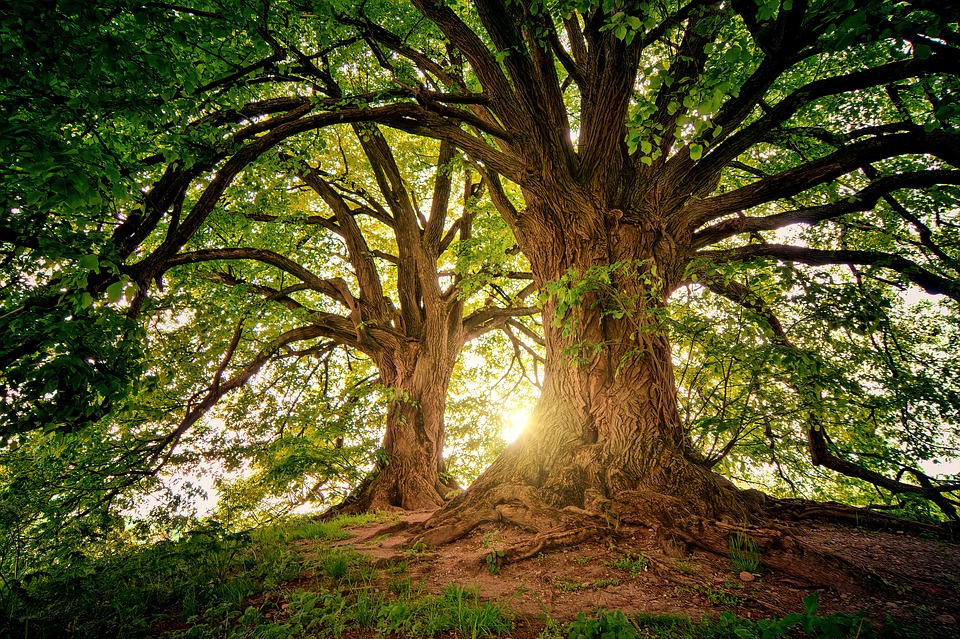Work together. Even trees do it!

Everything in nature is part of a system
When it comes to creativity, we have a lot to learn from nature, especially when it comes to working together to achieve a better outcome.
German forester, Peter Wohlleben, shone a light on how trees work together in forests his 2016 book, The Hidden Life of Trees. Over a period of 20 years, Wohlleben studied the lives of trees whilst managing a forest in Germany. He learned that trees communicate complex information to one another via smell, taste, and electrical impulses. Rather than standing as lone organisms they form a strong community sharing nutrients via their root systems, ‘nurturing’ younger trees, supporting sick or aging trees, and warning each other of danger.
Wohlleben describes this incredible warning system:
“Four decades ago, scientists noticed something on the African savannah. The giraffes there were feeding on umbrella thorn acacias, and the trees didn’t like this one bit. It took the acacias mere minutes to start pumping toxic substances into their leaves to rid themselves of the large herbivores. The giraffes got the message and moved on to other trees in the vicinity. But did they move on to trees close by? No, for the time being, they walked right by a few trees and resumed their meal only when they had moved about 100 yards away.”
The nearby trees received the warning and also started releasing the toxic substances to ward off the giraffes. The trees further away had not received the signal and were still edible.
 If trees are able to collaborate like this, how much more so for humans!
If trees are able to collaborate like this, how much more so for humans!
* The main image: Peter Wohlleben, author of The Hidden Life of Trees.
Collaboration magnifies creativity exponentially
|
In the late 19th century, musicians, writers and artists began flocking to the Parisian neighbourhood of Montmartre. The creative energy generated by the exchange of ideas and collaboration within this community (which included Degas, Renoir and van Gogh) drove a wave of innovation and change across the rest of Europe. |
|
At Bell Labs in the 1940s and 1950s, industrial physicist and director Mervin Kelly insisted that disparate teams of researchers, developers and theorists be gathered under one roof. He believed that collaboration would drive the exchange of ideas and promote creativity and innovation. His theory proved true and Bell Labs produced many successful inventions including the transistor, the laser, solar cells and radio astronomy. |
|
Van Gogh’s Parisian nightlife painting, 1886 |
|
The first moden solar cell was invented at Bell Laboratories in 1964. |
When it comes to creativity, when we collaborate our output is greater than the sum of our individual parts. Just like iron, sharpens iron, human minds spark off one another and spur one another on to greater energy, better ideas, and a better outcome than when we are alone. Note that iron does not sharpen iron with a gentle soft touch. Healthy debate, respectful disagreement and testing of ideas perform the role of ‘creative abrasion’, a vital aspect of the development of new ideas.
Perhaps, like me, you find this hard and tend to avoid conflict, even constructive creative conflict. Be warned that false harmony and agreeing with everything someone suggests, does not promote creative thinking. Creative ideas and creative solutions are by definition new, strange and out of our comfort zone. Expect resistance and don’t be put off by it! Embrace healthy creative abrasion. Someone may need us to be their ‘sandpaper!’
Collaborate creatively to find better solutions
Here are three ways you can collaborate with others to shine your creative light. Some of these are recommended by creative experts Tom and David Kelley in their book Creative Confidence.
 |
Get help You will be amazed how others can help to lighten the load, even if they aren’t going to go the whole journey with you. Is there someone who can work on your creative endeavour with you? Maybe you can hire or rope in some assistance. |
|
|
Create peer pressure Peer pressure is a bit like getting a fitness instructor. You know how to do a sit-up, but when you have an instructor leaning over you, you are going to put in more effort and have a better chance of completing the workout! Even telling a group of friends about your plans creates that peer pressure for you to be accountable to them. |
 |
Gather an audience Sometimes we need to speak out our creative ideas and share them. Sharing our ideas brings them more to life. We are better able to clarify our thoughts. We may even get some valuable feedback and another perspective. |
We would love to partner with you on your journey to developing better collaboration and creative thinking skills. We offer training, team building and coaching, particularly focused on the areas of innovation and creativity.
Get in touch with us at [email protected]
If you haven't get done so, why not join our tribe of creative thinkers ...
You know you want to.
References
Wohlleben, Peter. The Hidden Life of Trees: What They Feel, How They Communicate—Discoveries from a Secret World. Greystone Books, 2016
Wolff, Benjamin. “The Future Of Work Is Creative Collaboration.” Forbes Aug 14, 2018. Accessed 16 July 2021 https://www.forbes.com/sites/benjaminwolff/2018/08/14/the-future-of-work-is-creative-collaboration/?sh=489862073228
Kelly, Tom and Kelly, David. Creative Confidence: Unleashing the Creative Potential Within Us All. Currency, 2013





